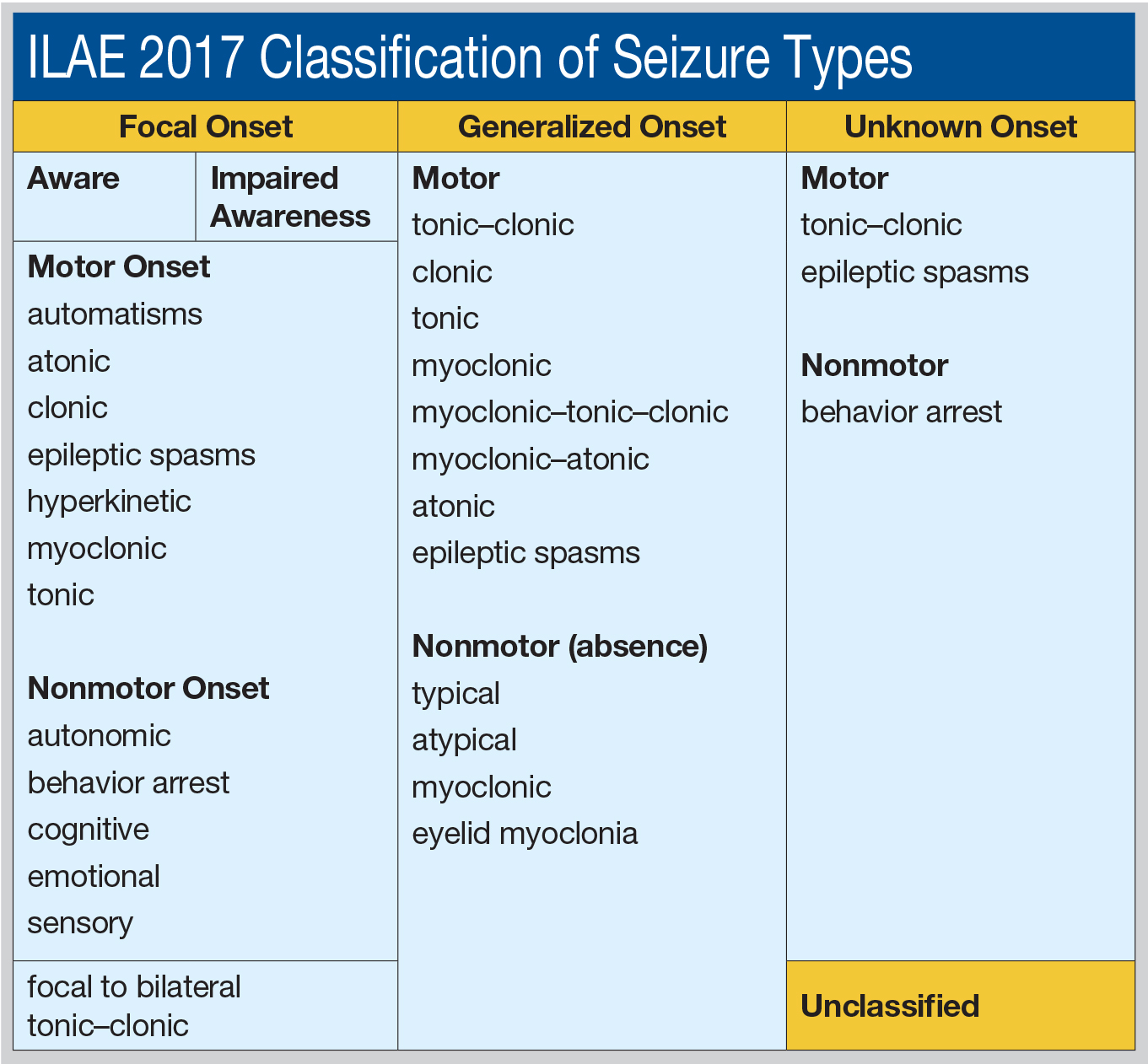HOUSTON—The International League Against Epilepsy (ILAE) has approved a new seizure classification. Robert S. Fisher, MD, PhD, Director of the Epilepsy Center at Stanford University in California and Chair of the ILAE’s Seizure Classification Task Force, described the classification at the 70th Annual Meeting of the American Epilepsy Society.
The existing classification, published in 1981, worked well, but its limitations became apparent over time, Dr. Fisher said. For example, certain seizure types (eg, tonic) only existed in the generalized seizure category, even though they can occur focally. In addition, it was impossible to classify a seizure without knowing its onset, and some common seizures could not be classified at all.
The 2017 ILAE Seizure Classification addresses those limitations and updates certain terms to make them clearer to patients and people who do not specialize in seizure classification. “Some patients construe the word ‘simple’ to mean easy, and they feel that their seizures are not simple at all,” Dr. Fisher said. “So, a simple partial seizure is now going to be called a focal aware seizure. A complex partial seizure is a focal impaired awareness seizure.”
Impairment of consciousness has always played a key role in classifying seizures. The 2017 classification uses awareness as a surrogate marker of consciousness. Awareness can be used to classify focal, but not generalized onset, seizures in the new classification.
Focal seizures optionally may be further classified as motor or nonmotor. Nonmotor seizure types include behavior arrest, autonomic, cognitive, emotional, and sensory. Motor seizure types include atonic seizures, automatisms, clonic seizures, epileptic spasms, hyperkinetic seizures, myoclonic seizures, and tonic seizures.New generalized seizures include absence with eyelid myoclonia, epileptic spasms, myoclonic–atonic (as in Doose syndrome), and myoclonic–tonic–clonic (as in juvenile myoclonic epilepsy). A combined seizure type—focal to bilateral tonic–clonic—previously was known as secondarily generalized tonic–clonic.
Rules for Classifying Seizures
When classifying seizures, physicians should decide whether seizure onset is focal or generalized, using an 80% confidence level. Neurologists may classify focal seizures by degree of awareness or omit awareness as a classifier. If awareness is impaired at any point during a focal seizure, it is a focal impaired awareness seizure.
The first prominent sign or symptom of a focal seizure should be used for classification, not counting transient behavior arrest. A focal seizure is only considered a behavior arrest seizure if behavior arrest is the prominent feature of the entire seizure.
Clinicians are encouraged to add descriptions of other signs and symptoms, but these additions do not alter the seizure type (eg, focal emotional seizure with tonic right arm activity and hyperventilation). Seizures may be unclassified due to inadequate information or inability to place them in other categories, Dr. Fisher said.
Implications of Seizure Type
Seizure type may suggest a particular treatment, prognosis, restriction of an activity like driving, or an underlying disease process. The ILAE task force initially was interested in developing an entirely new seizure classification based anatomy, brain networks, or pathophysiology. “But we quickly realized that we just did not know enough about the underlying science,” Dr. Fisher said. Instead, they updated the existing, primarily observational classification.
The ILAE plans to publish the classification in an upcoming isssue of Epilepsia. A mapping table will allow neurologists to match old and new seizure terms.
—Jake Remaly













